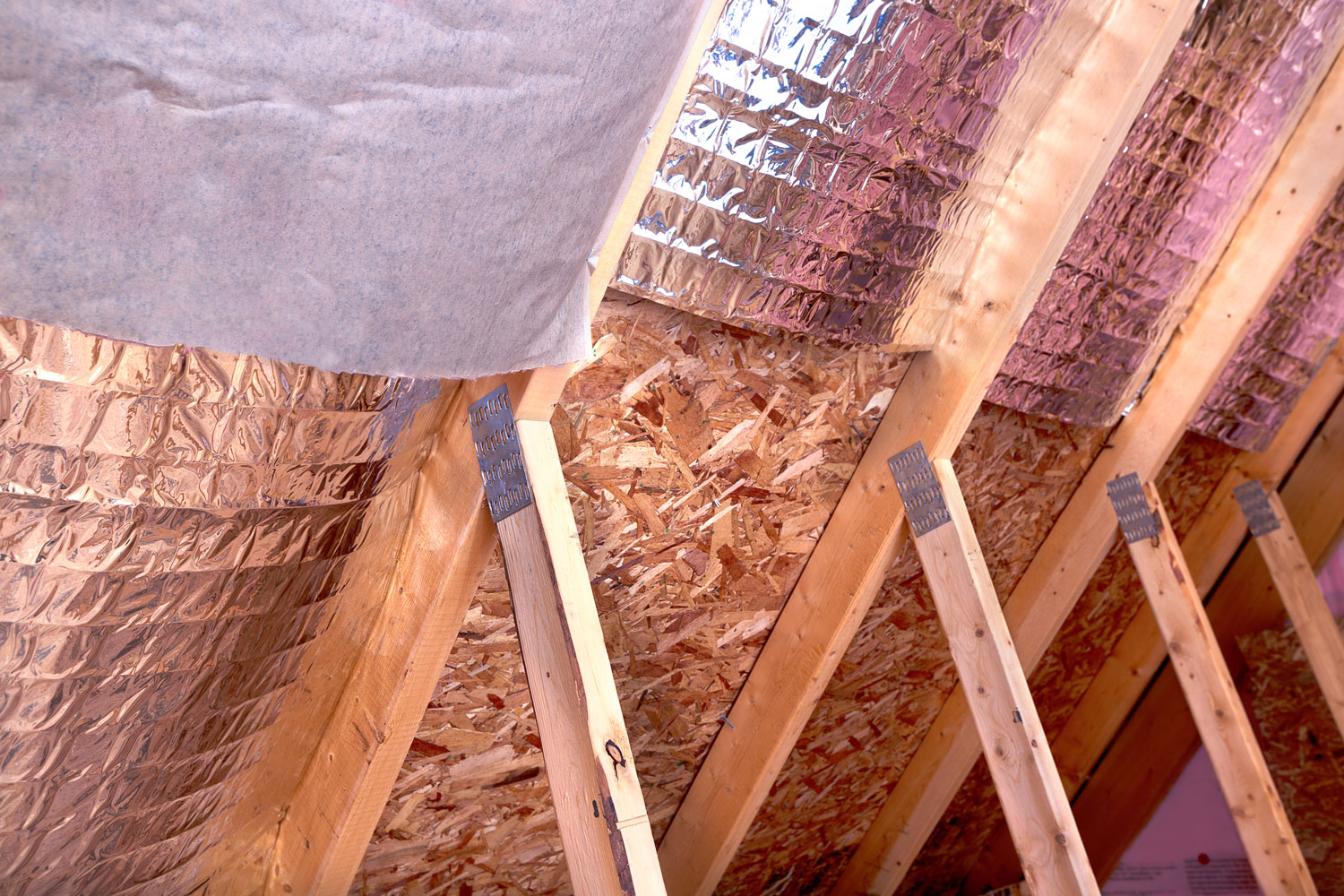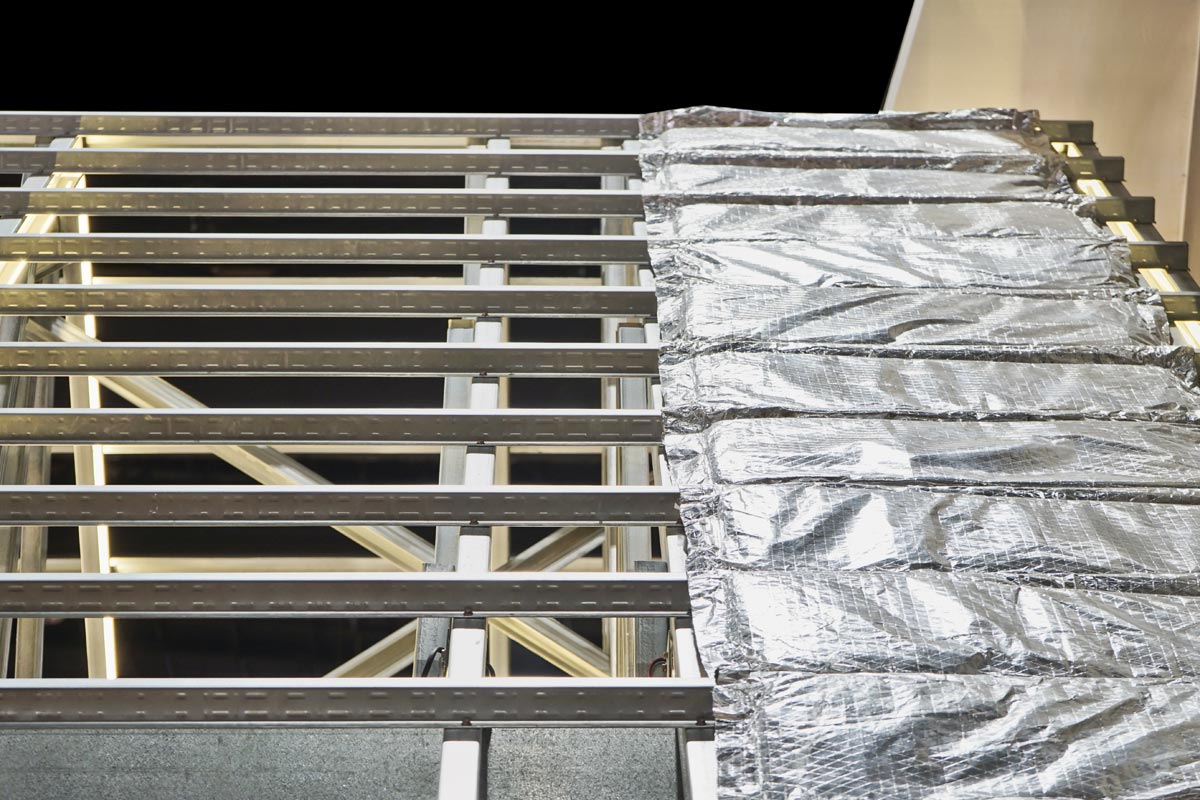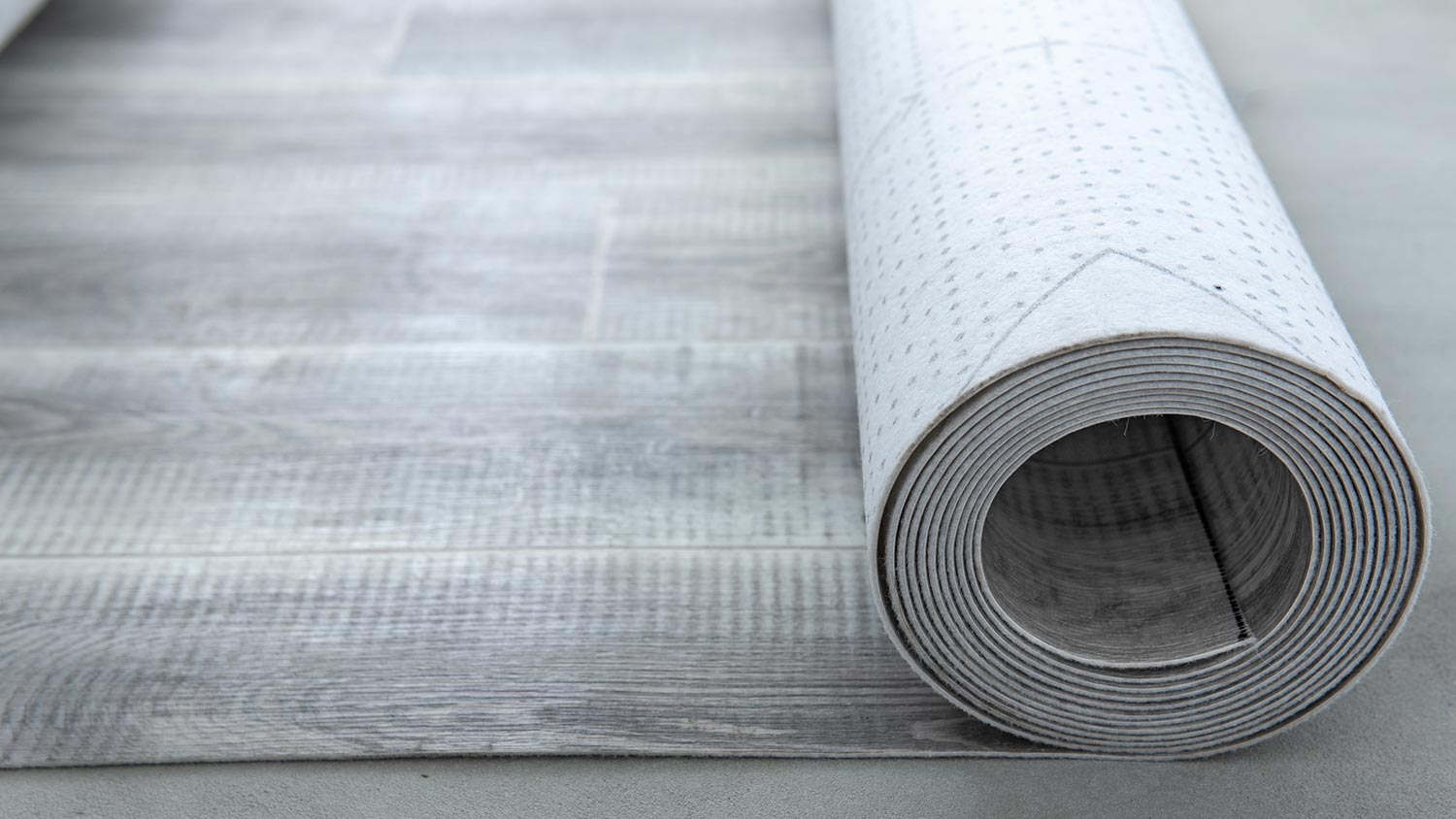Radiant barrier insulation is one of the most popular types of insulation for homeowners. It cuts down on energy costs by preventing the heat from escaping through the attic. But the question that most consumers ask is how long does it last? We researched the topic, and here’s what we found.
Standard insulation methods including radiant barriers last anywhere between 80 to 100 years, as long as they are installed correctly. You can use it for decades without significant problems.
Keep reading if you are considering radiant barrier. We will look into the different aspects of this product to help you decide if it’s right for your home.

What Is Radiant Barrier Insulation And How Does It Work?
A radiant barrier is a reflective insulation material used, particularly, for the attic to reduce summer heat gain and cooling costs. It is made of a thin sheet of aluminum that reflects 97% of the heat that comes in contact with the material, preventing it from passing through to the other side.

It has layers of wooden fabric that protect the aluminum from ultraviolet light. You can expect radiant barrier insulation to have a lifespan of 80 to 100 years.
Check out this product on Amazon.
Understanding Radiant Barrier R-Value
The R-value is a measure of a material's resistance to heat flow. The higher R-value, the better. The radiant barrier does not come with an R-value.
It blocks 97% of the radiant heat coming into your attic to slow down heat conductance, which would otherwise contribute to raising the temperature in your home. But it doesn't have any R-value directly on its own.
Benefits
Radiant barrier insulation does help with these features:
Blocks Radiant Heat
When it comes down to preventing radiant heat, there is nothing better than reflective insulation. That is the reason it is called “radiant barrier insulation” in the first place—it repels sunlight that accounts for the majority of heat gain in your home.
Deters Mold
Cellulose, fiberglass, and many other insulation materials are susceptible to mold growth but not the radiant barrier. Thanks to its wooden fabric that reduces condensation.
Never Settles
Radiant barrier insulation doesn’t deteriorate over time, so neither is its quality nor effectiveness. For that reason, it’s one of the most energy-efficient and cost-effective insulation options.
No Off-Gassing
Radiant barriers are very similar to fiberglass except that they emit no particles which can become a health hazard. This makes your home safe for everyone who lives there.
Drawbacks
Using radiant barrier insulation also has disadvantages you need to take note of:
Less Effective in Colder Areas
While radiant barrier insulation is the go-to for homes in warm climates, it may not be quite as effective in cooler areas, or during the winter months. So if you live in a place with cold temperatures, installing an additional layer of thermal insulation alongside your radiant barrier might be wise.
Can’t Prevent Conductive Heat Gain
Radiant barrier insulation cannot stop convective and conductive heat transmission; it only works well for radiant heat. If you wish to eliminate thermal transfer, spray foam and fiberglass make the best choice.
Can Harbor Dust and Dirt
While radiant barrier insulation is resistant to mold, it's susceptible to dust and dirt. Although dust accumulation is harmless, it could potentially reduce its quality and effect.
How To Install Radiant Barrier Insulation

Installing a radiant barrier involves two main options: stapling it to the attic rafters or laying it out on the attic floor. This will be based mainly on the climate and the unique structure of your property. Every home is different and each one requires a specialized approach.
Staple Method
Staple up (open ridge) is a type of installation method preferable in hot climates and wide-open attics. It works by stapling the foil horizontally across the rafters to get as much coverage in no time.
Laying Method
The radiant barrier can be easily installed in attics by placing the foil over existing insulation. This is done mostly in cold climates. Before anything else, take a moment to look at your insulation levels. See if you need additional insulation materials before adding the foil.
Installing Radiant Barrier Insulation In Your Attic

Follow these directions to insulate your attic with a radiant barrier:
- Begin installing the radiant barrier from one corner of the attic across the floor joists, decks, or existing insulation. Use a furring strip to push the material into tight crevices.
- Continue the process and overlap each section that’s already been rolled out by 2 inches.
- When laying out the foil, you don’t necessarily have to flatten it.
- Staple the radiant barrier on the knee walls; allow a 2-inch overlap.
- Once done, remove any heat source in the attic, and mark the electrical switch that’s been covered for easy access in the future.
Radiant Barrier Installation Tips
Here are tips to make radiant barrier installation a little easier if it's your first time doing it:
- Begin work early in the morning before the attic gets heated up.
- Carry everything you'll need to avoid walking up and down the stairs repeatedly.
- Consider bringing some type of lighting source to be able to see clearly, especially if your attic is dim.
- Find a central location to set up your equipment and supplies.
- Be cautious of the attic floor joists you walk on. Some have a tendency to shift over time, particularly if they aren’t as well-nailed down as they should be.
- For DIY, don’t try to tackle a large job in one day. It’s better to break it up over several days during the cooler hours.
How Much Is Radiant Barrier Insulation
The cost of radiant barrier insulation is usually no less than $700 for the entire project. But this may vary depending on the factors below:
- Scope
- Size of the area to be insulated
- One-sided vs. two-sided foil
- DIY vs. professional installation
Things To Consider When Choosing the Best Radiant Barrier
There are many radiant barriers available on the market, but make sure to check the following factors before investing in one:
Reflectivity
Radiant barriers are dependent on their contact surface to reflect radiant heat, so find a product with superior reflective properties. Choose one with 95% or more reflectivity; that will only allow 5% of the heat to pass through.
ASTM Compliance
The radiant barriers must meet American Society for Testing and Materials standard C1313, which covers everything from reflectivity to strength. Buy a radiant barrier that is ASTM-compliant to ensure maximum insulating efficiency and minimal health risks.
Roll Width

The standard length of a radiant barrier roll is 48 inches, but some products come in 50 or 51 inches. This facilitates wider coverage, making the installation quicker.
Myths About Radiant Barrier Insulation
Myths you may hear about the radiant barrier include:
Myth #1: A radiant barrier exponentially heats up the attic, damaging the roof shingles
Truth: This is just a misconception. The fact is, almost all of the heat is reflected back towards its source. So it isn't actually adding more heat but rather just changing the direction in which it flows.
Myth #2: Radiant barrier is fit for new structures only
Truth: Radiant barrier can be installed in older structures. It doesn’t require modern walls or roofs at all; most homeowners who have invested in radiant barriers already have existing homes.
Myth #3: Radiant barrier paint is the same as radiant barrier roll
Truth: Radiant barrier paint won’t give you the same benefits as radiant barrier insulation. Neither can this paint be equated with a radiant barrier under the U.S. Department of Energy’s guidelines because it reflects only 75% of radiant heat energy, and proper radiant barriers must have a 90% reflectance or higher.
Radiant Barrier Insulation Maintenance
If installed correctly, you will have nothing to worry about the radiant barriers’ maintenance. It would still work for decades without extra touch up or treatments. Supposed your attic has no proper ventilation, dust may accumulate on them, which vacuuming can tackle.
Does Radiant Barrier Reduce Wifi Signals?

The attic only accounts for 20 to 30% of the area of a home and with aluminum that is 3.3 mm thick, it is less likely to impact your Wi-Fi signal unless you have a radiant barrier installed between you and the router.
Conclusion
Radiant barrier insulation can last for 80 to 100 years. It will work without any significant issues even without little to no maintenance.
If you liked this post, you might also like:

